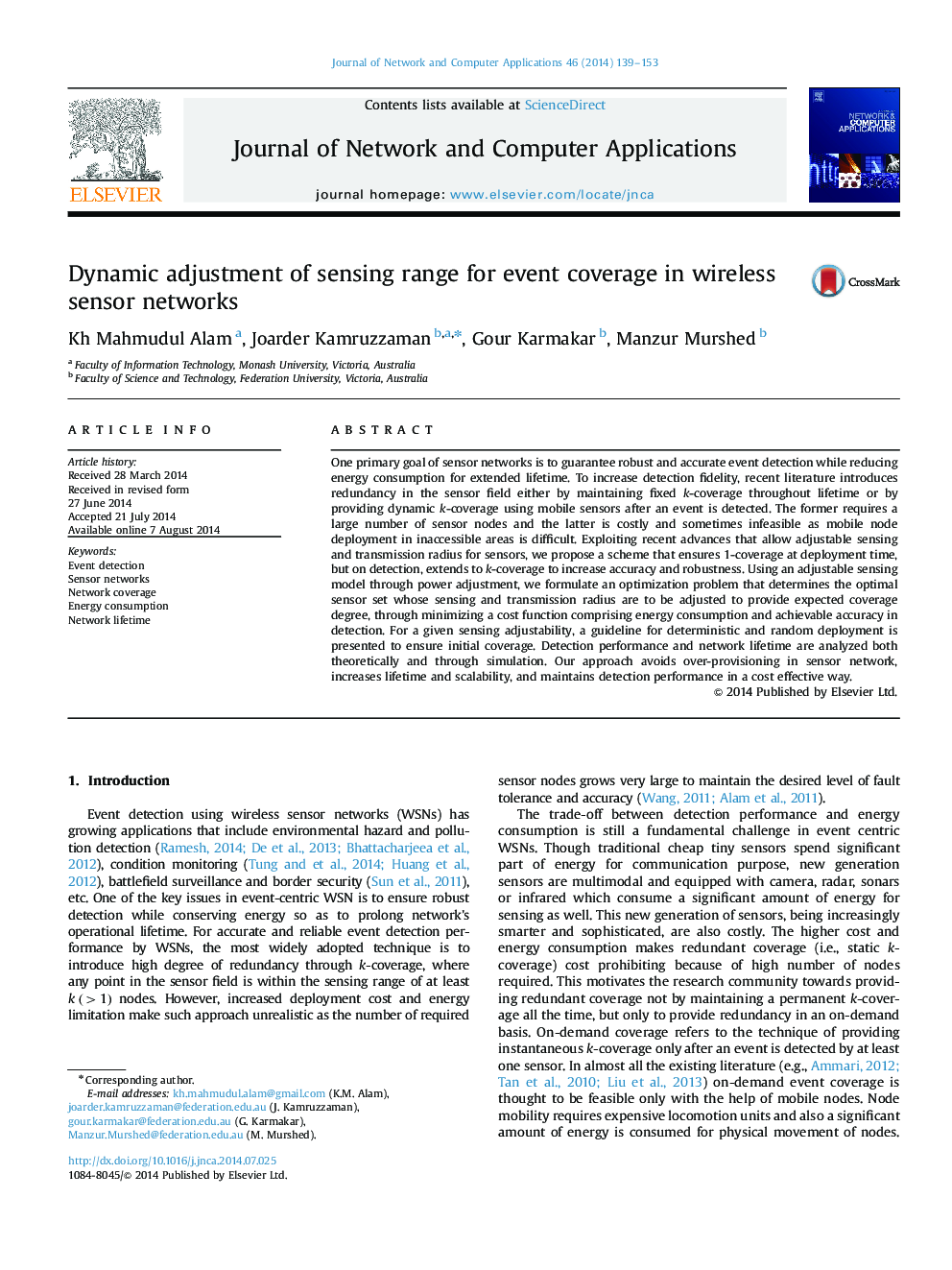| Article ID | Journal | Published Year | Pages | File Type |
|---|---|---|---|---|
| 457288 | Journal of Network and Computer Applications | 2014 | 15 Pages |
One primary goal of sensor networks is to guarantee robust and accurate event detection while reducing energy consumption for extended lifetime. To increase detection fidelity, recent literature introduces redundancy in the sensor field either by maintaining fixed k-coverage throughout lifetime or by providing dynamic k-coverage using mobile sensors after an event is detected. The former requires a large number of sensor nodes and the latter is costly and sometimes infeasible as mobile node deployment in inaccessible areas is difficult. Exploiting recent advances that allow adjustable sensing and transmission radius for sensors, we propose a scheme that ensures 1-coverage at deployment time, but on detection, extends to k-coverage to increase accuracy and robustness. Using an adjustable sensing model through power adjustment, we formulate an optimization problem that determines the optimal sensor set whose sensing and transmission radius are to be adjusted to provide expected coverage degree, through minimizing a cost function comprising energy consumption and achievable accuracy in detection. For a given sensing adjustability, a guideline for deterministic and random deployment is presented to ensure initial coverage. Detection performance and network lifetime are analyzed both theoretically and through simulation. Our approach avoids over-provisioning in sensor network, increases lifetime and scalability, and maintains detection performance in a cost effective way.
